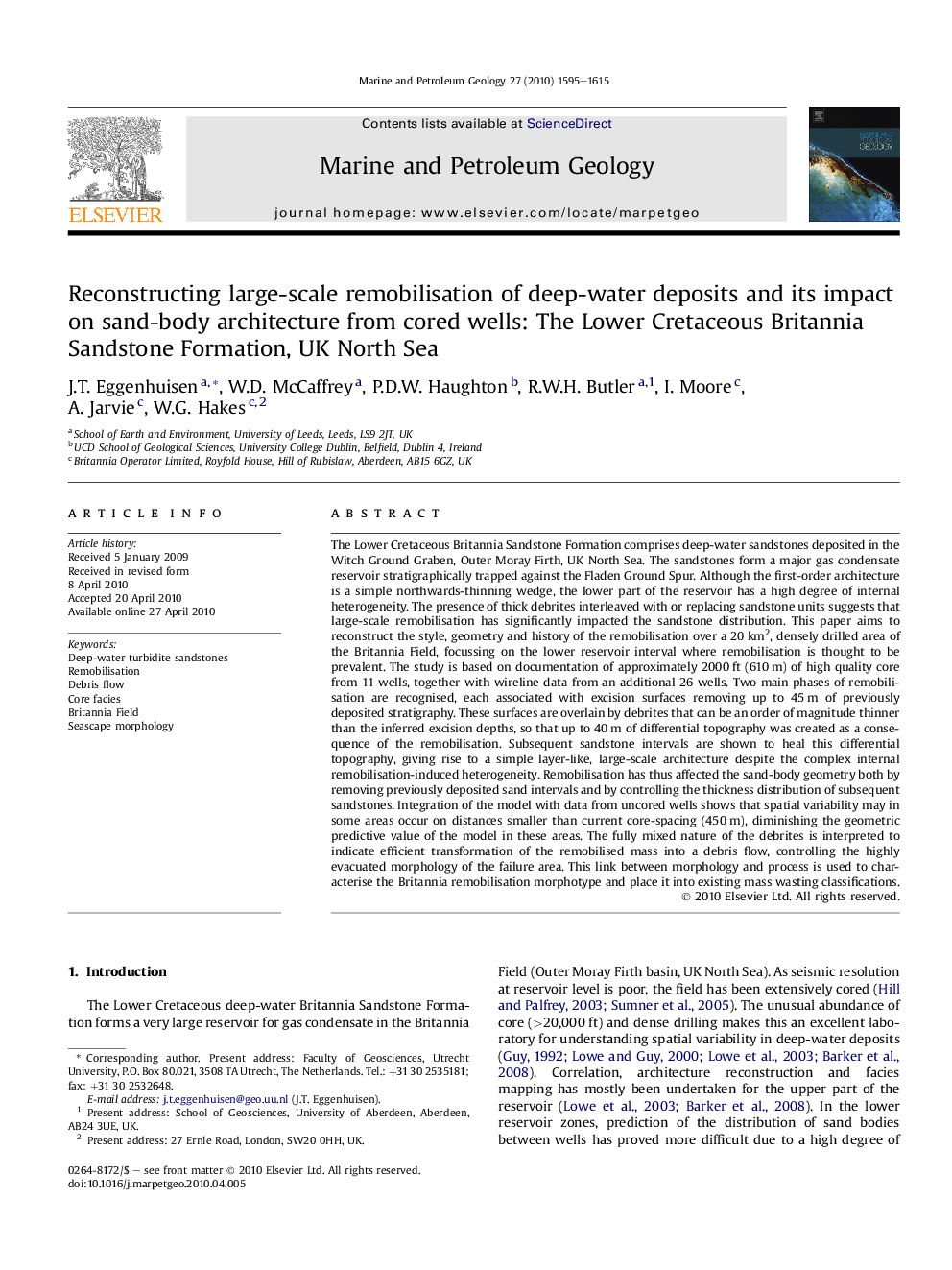| Article ID | Journal | Published Year | Pages | File Type |
|---|---|---|---|---|
| 4696224 | Marine and Petroleum Geology | 2010 | 21 Pages |
The Lower Cretaceous Britannia Sandstone Formation comprises deep-water sandstones deposited in the Witch Ground Graben, Outer Moray Firth, UK North Sea. The sandstones form a major gas condensate reservoir stratigraphically trapped against the Fladen Ground Spur. Although the first-order architecture is a simple northwards-thinning wedge, the lower part of the reservoir has a high degree of internal heterogeneity. The presence of thick debrites interleaved with or replacing sandstone units suggests that large-scale remobilisation has significantly impacted the sandstone distribution. This paper aims to reconstruct the style, geometry and history of the remobilisation over a 20 km2, densely drilled area of the Britannia Field, focussing on the lower reservoir interval where remobilisation is thought to be prevalent. The study is based on documentation of approximately 2000 ft (610 m) of high quality core from 11 wells, together with wireline data from an additional 26 wells. Two main phases of remobilisation are recognised, each associated with excision surfaces removing up to 45 m of previously deposited stratigraphy. These surfaces are overlain by debrites that can be an order of magnitude thinner than the inferred excision depths, so that up to 40 m of differential topography was created as a consequence of the remobilisation. Subsequent sandstone intervals are shown to heal this differential topography, giving rise to a simple layer-like, large-scale architecture despite the complex internal remobilisation-induced heterogeneity. Remobilisation has thus affected the sand-body geometry both by removing previously deposited sand intervals and by controlling the thickness distribution of subsequent sandstones. Integration of the model with data from uncored wells shows that spatial variability may in some areas occur on distances smaller than current core-spacing (450 m), diminishing the geometric predictive value of the model in these areas. The fully mixed nature of the debrites is interpreted to indicate efficient transformation of the remobilised mass into a debris flow, controlling the highly evacuated morphology of the failure area. This link between morphology and process is used to characterise the Britannia remobilisation morphotype and place it into existing mass wasting classifications.
